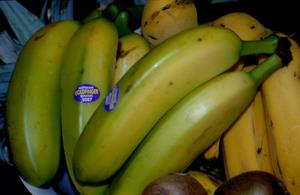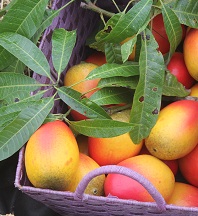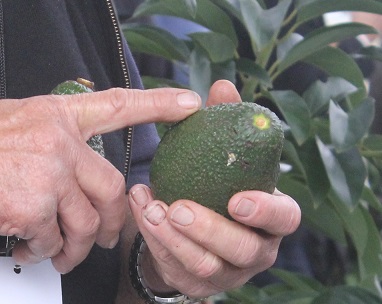Learn fruit growing for tropical and sub-tropical climates
 The course covers orchards, nuts, berries, trees, plantations and marketing. There are eight lessons in this course. You can start the course at any time and work through the course with the support of our highly experienced and well qualified tutors. At the end of each lesson, there is an assignment to submit to your tutor for marking.
The course covers orchards, nuts, berries, trees, plantations and marketing. There are eight lessons in this course. You can start the course at any time and work through the course with the support of our highly experienced and well qualified tutors. At the end of each lesson, there is an assignment to submit to your tutor for marking.
The course requires 100 hours of study approximately.
COURSE STRUCTURE
There are 8 lessons as follows:
1. Introduction To Warm Climate Fruit Growing
- Identify different types of fruit crops, which can be successfully grown in your region.
- Explain the nature of the fruit industry in your region (locality).
2. Establishing An Orchard
- Develop a plan for the establishment of an orchard
3. General Cultural Practices
- Determine the cultural requirements for different fruit crops in your locality.
4. Tree Fruits
5. Nuts, Vines and Berries
6. Citrus
7. Cultural Management Of A Fruit Plantation or Orchard
8. Marketing Your Produce
AIMS
On successful completion of the course you should be able to do the following:
- Identify different types of fruit crops, which can be successfully grown in a specific region.
- Explain the nature of the fruit industry in a specific region.
- Determine the cultural requirements for different fruit crops.
- Develop a plan for the establishment of an orchard.
- Formulate appropriate methods for marketing specific fruit crops grown in your locality.
- Develop a calendar for cultural management of a fruit plantation, or orchard.

WHAT THE COURSE COVERS
You will learn a wide variety of things, through a combination of reading, interacting with tutors, undertaking research and practical tasks, and watching videos. Here are just some of the things you will be doing:
- Compile a resource file of different sources of information regarding commercial fruit varieties.
- Compare the facilities used to produce six different fruit crops, in a specified locality.
- Determine criteria for selecting a fruit variety to grow as a commercial crop in your locality.
- Select five different fruit varieties with commercial potential for a specified location.
- Analyse the physical layout of a specified orchard.
- Determine the scope of commercial fruit growing in a specified locality.
- Demonstrate standard soil tests to three different soils to determine:
- Soil type
- pH
- Drainage
- Water holding capacity
- Evaluate the different soils tested to determine their suitability for growing different fruit varieties.
- Analyse the culture
- Watering
- Weed control
- Soil management
- Pruning
- Fertilising
- Pest control
- Disease control
- Determine soil management practices, including:
- Nutrition
- Soil structure
- Cultivation
- Weed control
- Determine the susceptibility of specified fruit species to pest and disease problems.
- Explain how to control different specified pests and diseases, on different fruit varieties grown.
- Develop sets of guidelines for pruning different types of fruits.
- Determine the factors which are critical to growing fruit trees in the your locality.
- Determine criteria to select a site for fruit growing in your locality.
- Compare the physical layout of two different orchards you visit.
- Prepare a plan for establishing a fruit growing area, in your locality, including:
- Concept layout plan drawn to scale
- Materials list (including plants)
- Cost estimates for establishment.
- Analyse different marketing systems in the fruit industry, including at local, national and international levels.
- Explain common reasons for price fluctuations in the fruit industry.
- Compare different fruit crops in relation to different factors, including:
- Storage requirements
- Storage life
- Harvesting time
- Shelf life
- Transport to market
- Evaluate the presentation and packaging of different fruits, for marketing through different marketing systems.
- Analyse different marketing strategies used by a specific fruit grower.
- Develop a marketing strategy, including:
- Marketing stages
- Marketing schedule (ie. timetable)
- Estimated marketing costs
- Handling procedures
- Promotions, for a specific fruit crop.
- Differentiate between the cultural practices undertaken by different growers, on the same crop, grown in two different localities.
- Determine the cultural practices necessary to grow different fruit crops for a twelve month period, on a specified site.
- Prepare a monthly calendar, covering a twelve month period, for cultural practices in a fruit plantation or orchard you choose.
HOW TO GROW MANGO (Mangifera indica)
 Family - Anacardiaceae
Family - Anacardiaceae
Origin – India, Burma and Malaysia
Description
Large, dense tree with scented, deep-green leaves. Flower sprays produced in spring followed by fruit which mature to green-red. Large seed with fibrous fleshy pulp.
Culture
Generally mangos are tough plants, although added preparation will definitely improve production. Tolerant of most soil types. Add compost to site and fruit tree fertiliser. Water well. Poor salt and frost tolerance. Propagated by seed or grafting.
Best results occur on well drained sandy loam to loam soils. Incorporate organic matter into the soil prior to planting Regular mulching is beneficial. Fertilise twice a year. Benefits from occasional sprays of seaweed solution or fish emulsion. Prune to control height and width. Only prune after fruit are harvested.
Propagation
Some types (e.g. Common & Kensington Pride) can be produced true to type from seed, others are budded onto seedlings.
Pests & Diseases
Pests include beetles, fruit fly, scale and weevils.
- Diseases may include bacterial spot, powdery mildew and anthracnose.
- Scale can be controlled with oil or soap based sprays
- Anthracnose may be deterred by pruning the tree to open the centre and improve ventilation.
- Prone to fruit fly, anthracnose, root rots, scale, etc. Mangoes tend to be biennial bearing (ie. alternating between heavy crops one year, and little the next).
Related Fruits
M. indica (Mango) - The main species grown. It is the common mango of commercial importance. Varieties now offer range of fruit sizes, colour and size of tree.
M. odorata (Kuwini or Wangi) is a large tree with large oval green fruit and sweet orange pulp.
There are several other species occasionally grown for fruit, including: M. caesia (Belunu), M. longipes (Mango Ayer), M. pajang (Bambangan) and M. quadrifolia (Baab).
Uses
New varieties have been releases, but these are not yet widely grown. The fruit mature between mid spring to early autumn in most places, with the peak season being late spring and early to mid summer. Fruits vary considerably in shape and size, with colours ranging from light green to yellow and orange.
They are used widely for culinary purposes, such as eaten fresh, juiced, canned, dried or frozen.
They are widely used as a desert fruit.

ENROL TODAY -LEARN TO WORK WITH TROPICAL FRUIT
WHAT NEXT?
Register to Study -Go to panel toward top of this page (right column)
or
Get Advice -Use our FREE COUNSELLING SERVICE to contact a tutor
CLICK TO CONTACT US